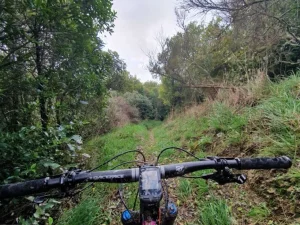Precision Interval Training
Precision interval training, short efforts, rest, persuit prompts all you need for short-distance fast training! This training method increases VO2 max and boosts muscle endurance, leading to increased power economy. This might look like 30 seconds of all-out pedaling at 90% of your maximal effort followed by 60 seconds of less intense cycling. The idea behind this alternation is that it trains the body of a cyclist to practice explosive power and recovery which is extremely important during fast sprints in races or difficult terrains.
Doing PITS during normal rides
Incorporating precision interval training into an everyday cycling routine is a game of strategy. Bikers will to begin with wish to do 2 classes every week, because these might be differing high-intensity and healing periods. An example of a real life version of this workout, is a session with 10 x 1 minute runs as hard as possible which is paired with 2 minutes recovery easy pedaling. Heart rate and power output should be tracked to ensure that each interval is being performed at the right intensity to provide the greatest reward.
Tracking Progress and Ensuring You Work On The Right Things
Cyclists cal also keep track of their progress, over time improvements should lead to an increase in the average speed, duration of high-intensity levels, and faster recovery. Data from tools such as power meters and heart rate monitors can be used to modify training sessions. A cyclist may find that their recovery rate between efforts improves dramatically, meaning they might do more 30 second all out intervals, or they might run each sprint for 30 seconds longer.
Advanced Methods and Considerations
Advanced techniques like over-under intervals can even be introduced for intermediate + level riders. These are different from true threshold efforts as they switch it up (i.e. some just above and some just below) – helping to desensitize your body to lactic acid. One workout could be 10 minutes of 1 minute at 105% of FTP (Functional Threshold Power), then 1 minute at 95% of FTP. This approach serves to further upgrade metabolic efficiency and trophic features.

Active Recovery Monitoring
What You Need to Know About Active Recovery in Intervals
That’s part of the nature of interval training when you’re a short distance track racer, and active recovery plays a big part in this training and recovery process. Contrary to passive recovery, where you do nothing and let nature run its course, active recovery is understanding adaptations at a Min-Max level resulting in doing more of low-scale activity instead of complete rest. This is good because you are keeping your heart rate up AND forcing the body to clear out lactic acid, both of which will stay elevated and help overall muscular recovery. Such as, doing 5 minutes of light pedal after a hard interval will allow your heart rate to drop, and for the muscles to stop seizing up.
Monitoring & Maximizing Active Recovery
Cyclists need to pay attention to their active recovery metrics in order to do active recovery effectively. Devices like heart rate variability (HRV) and lactate monitoring provide a window into recovery rates during these easy days. Real-time, user-tracked adjustments of the duration and intensity of active recovery, can optimize training and lead to enhanced performance. If a cyclist’s HRV shows they have not fully recovered, the act of recovery could be extended, or the intensity of recovery lessened.
Active Recovery using Technology
The effective use of technology to track active recovery phases is important to optimize your training results Using applications and wearables that supply information regarding your physiological response during active recovery lets you make sure the slight changes you made to your plan are exactly what your body needs. A smartwatch detects the heart rate of the cyclist and triggers the cyclist who are within the right heart rate recovery range for them the activity can continue or stop.
Exemplars and Applications
Case studies in the field show the benefits of well-monitored active recovery. Athletes who implement data-driven active recovery strategies frequently see increases in the endurance capacity and the rate of training adaptation. Obviously this type of scrutiny only arose because there were so many similar cases, and a closer look at events like this suggests to me that those who adjust their recovery periods relative to something more specific like changes in a physiological “marker” will get higher summed training efficiencies than those who go on to just “well I guess they should terminate the workout here” (Not directly referring to what is graphed above, just a general point to throw out as I wish I had time to do more with that mess).
Sprint Power Increases
High-intensity interval training (HIIT): There are workouts that require shorter bursts of power that help train your body to provide maximum efforts with minimal recovery. During a normal workout, athletes might perform 30-second sprints at near maximal effort separated by 4 minutes of recovery cycling. This training activates your fast twitch muscle fibers that are critical for firing off maximum power on your sprints. Some evidence comes from a research experiment, wherein data from the investigation showed that cyclists increased their peak power output by 7% when they included twice-weekly sprint interval sessions (over an 8-week time period).
Using Exercise science to run like the wind
Regular resistance training can significantly increase sprint power in a cyclist. Squats, deadlifts, leg presses, etc., are the additional exercises that help develop the overall strength of your lower body that helps generate the explosive starts and sprints. A structured regimen may consist of three sets of six repetitions at 80% of one-repetition maximum twice per week. This does not only lead to more muscle volume, but also provides an important efficiency in terms of neuromuscular coordination, which is important for the rapid production of maximum power.
Using Power Meters to Track Progress
Power meters supply a cyclist with real time data from their training. Power meters are helpful in exact measuring wattage output while sprinting, It will help athletes to regulate their effort during the sprints. A cyclist looking to improve peak sprint power should monitor their wattage numbers at the top of every workout and then focus on incremental improvements each day. Monitoring will reveal whether a plateau has been reached and whether efforts need to be ramped-up or changed up in some way.
Successful Sprint Power Programs
The work of many case studies – showcasing cyclists who are successful in raising their watts at the sprint – is consistent in stressing training consistency and progression. One case saw a cyclist modifying his week by week dash reiterations after utilizing persistent power meter information, which prompted an improvement in dash power of 10% more than 12 weeks. These examples from real-life offer us actionable knowledge to take home: you can change a specific aspect of your training and with some improvements see a MUCH better sprint.
Stress Load Management
Stress Loads in Cycling Training
Those cyclists are training power and efficiency values – at sub-maximal tariffs – for short distance rides, which makes the management of stress loads so important. Not just any dose of training, but a welcome dose of just the right amount of stress load, quantified in metrics like Training Stress Score (TSS) and Acute
Workload Ratio: an indication of training stress and balance in recovery. For example, not increasing Training Stress Score (TSS) more than 10% per week will prevent over-training and maximize performance gains. By monitoring these metrics, the cyclists can take steps to correctthem in advance.
Load Balancing with Stress Efficiently
Cyclists should combine high-intensity training with ample recovery periods to better balance stress loads. Periodisation, that breaks training into progressive cycles where some cycles are focused on a certain goal, are a great way to do this. In practice, you could split a month into several types of weeks: two weeks building, one week peaking, one week recovering.
Recovery Techniques
The truth is recovery tools and strategies are a must in managing stress loads. Devices like foam rollers, massage guns, and compression wearables have been shown to assist with this recovery and can decrease the total stress load. This might include built-in rest days or active recovery days doing something like gentle cycling or swimming to help maintain CV fitness without the strain. In order to have continued training progress and health, these tools and strategies are vital.
Optimal Stress Load Case Studies
Take any case study of a successful cycling training program and it will stress on meticulous management of stress load. One cyclist who was training for a series of races used heart rate variability (HRV) monitoring to determine recovery requirements and that way he adjusted daily training stresses. This approach resulted in the best racing performances with no signs of over training or inappropriate stress, showing the power of managing stress loads based on data to achieve racing performance.

Technique Refinement Via Feedback
Real Time Feedback for Technique Alteration
Using real-time feedback in all training cycles is also key for correction of technique and efficiency. By way of power meters and video analysis tools, cyclists can receive immediate feedback on their pedallling style, body positioning and ride efficiency. A power meter might highlight spikes in power that signify wasted energy in pedal stroke, and enable you to make changes it right away. This feedback means cyclists can adjust their posture and pedaling technique on the fly, improving their performance and reducing the potential for injury.
The Place of Coaching and Video Analysis
The use of professional coaching and video analysis help a lot in technique fine-tuning. This information, when recorded during a training session and analyzed by a coach, can help provide the rider with concrete feedback, down to little biomechanical nuances they might otherwise not see. Video feedback may help reveal the fact that a cyclist twists his or her upper body too much during hard sprints; an inefficient movement that is wasting energy. From there, targeted exercises and drills can also be implemented to help correct this implementation gap.
Integration of Feedback Systems into Training Regimens
Both technological feedback systems as well as human feedback mechanisms should all be seamlessly integrated into the training process of a cyclist. Biomechanical sensors that give readings on muscle force or joint angles offer a high-resolution picture of the rider’s form. Regular training sessions in coordination with these tools enable continuous changes and development. For example, a sensor system that offers instantaneous feedback on knee angle could help cyclists adjust their pedaling pattern – allowing for more power generation with less risk of injury.
Learnings from Iterating on Technique Based on Feedback
This practice is proven through successful stories that has been documented about cyclist who, from the constant feedback, have left the techniques they needed to work on also better. One of those cases was with a professional cyclist that specialized in sprinting, who, by using high-speed cameras and power data, was able to figure out what changes to their sprint technique made them faster in a race and better some of the competitions. These examples are powerful evidence that strategic application of feedback makes a huge difference in the performance of on the bike.





